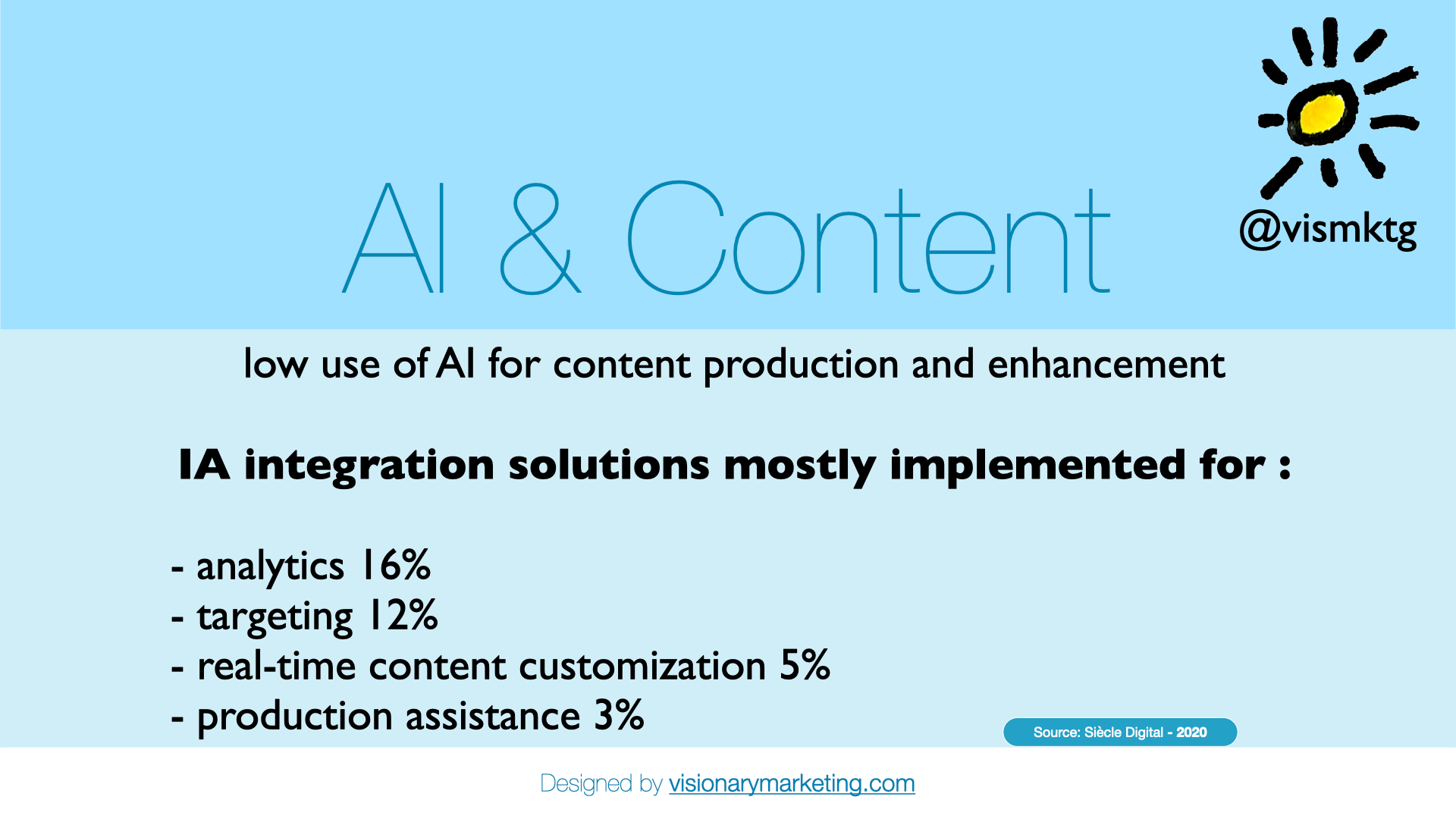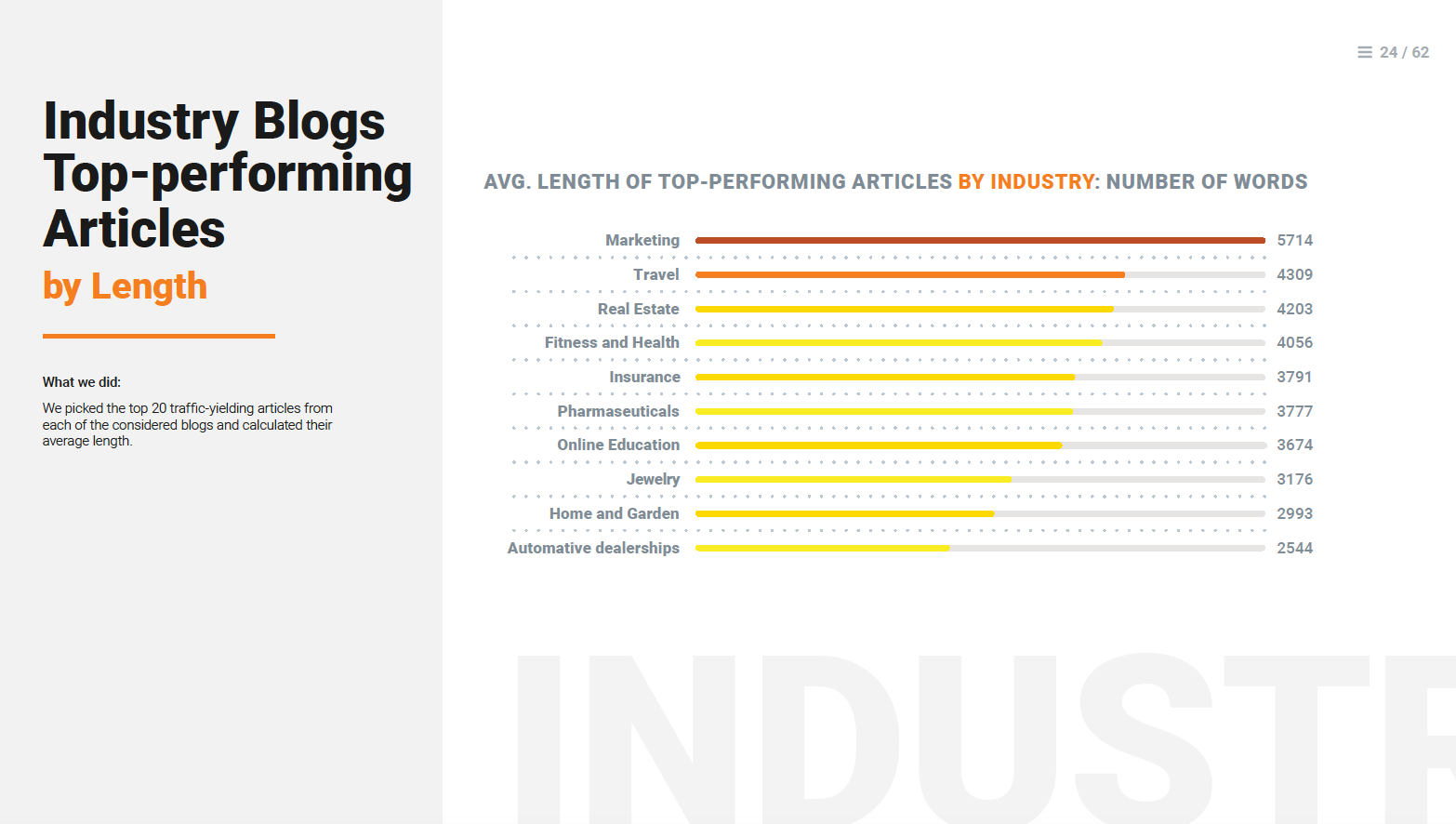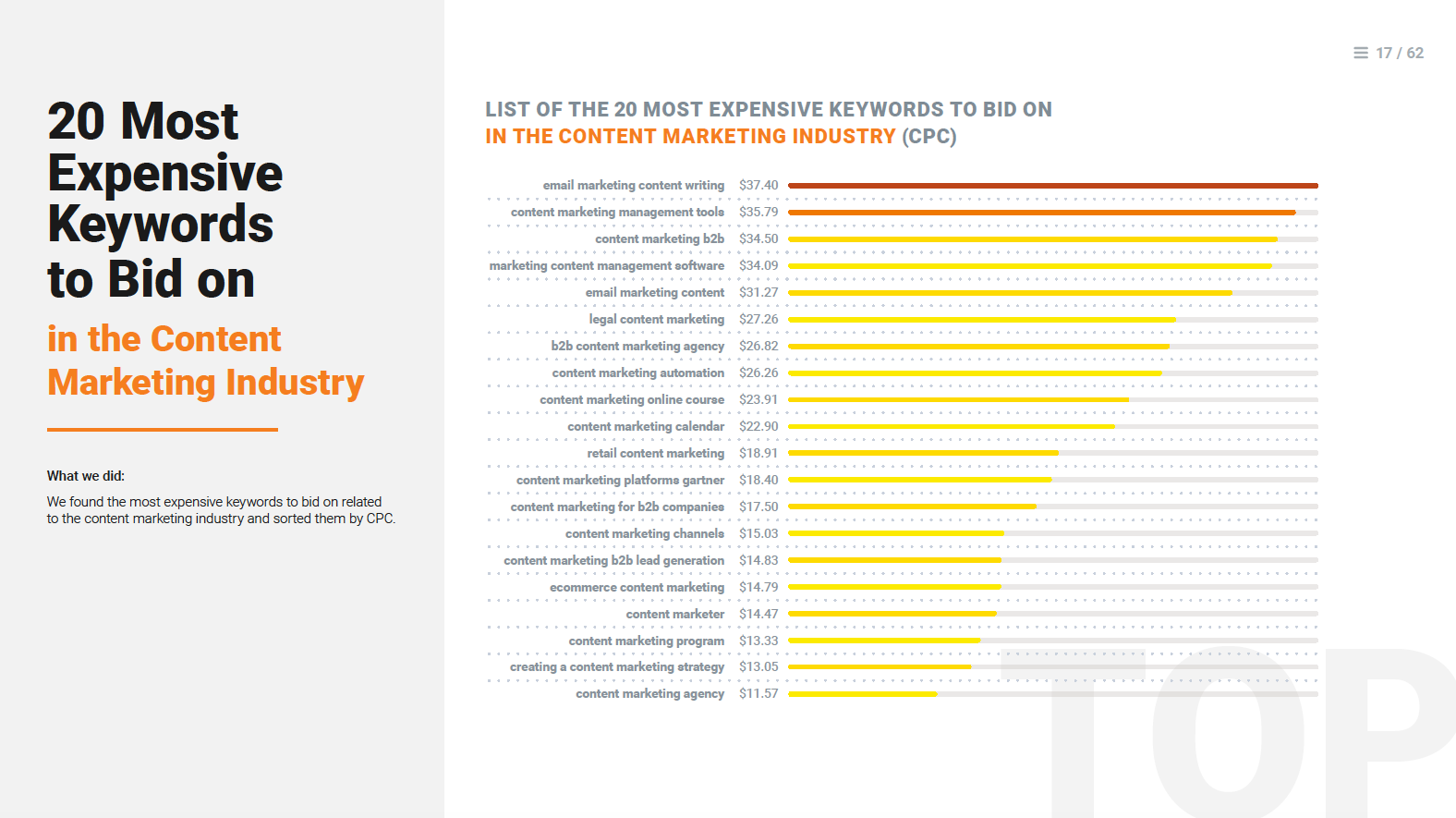A few thoughts regarding the future of content marketing beyond 2020
Here is a collection of random thoughts based on recent events related to the future of content marketing beyond 2020. I will soon add to this piece and publish new research on content marketing to populate my presentation, which was presented online on Aug 2020. A bunch of surveys on content marketing have been released lately on both sides of the Atlantic. Here, I will give my thoughts on how content marketing has evolved and will sketch a future for our profession.

A few milestones in the history of content marketing
Visionary Marketing was founded seven years ago, and the original eponymous website was created 25 years ago to the day. Even so, I can in no way be considered a trailblazer. John Deere founded the Furrow towards the end of the nineteenth century, and Michelin launched their celebrated guide a little before 1900. Both of these initiatives are still alive and kicking. These two examples tell you something about the meaning of resilience in the world of content.
However, a lot of water has gone under the bridge since the heyday of content marketing.
Joe Pulizzi’s famous Epic Content Marketing opus, which led many, in the business world, to discover content marketing for the first time, was published in 2014. A little later, Mark Schaefer wrote his famous content shock piece, and Doug Kessler issued his Crap presentation, which warned us about the danger of the proliferation of low-quality content. Lately, in 2019, a new book, we’ll come back to that later, F#ck content marketing by Randy Frisch came to the fore. Seen from the outside, one could start panicking, especially since an alarming piece of information was made public by Microsoft a few weeks ago.
Yet, looking at things more closely, there are opportunities for being more positive and looking forward to the future. Here is why.
Microsoft replaces journalists with robots
The piece of news was sent to me via WhatsApp through my community. “Microsoft sacks its journalists to replace them with robots,” we learnt in a sensationalist news item in The Guardian dated May 30, 2020. About 27 people employed by PA Media – formerly the Press Association – were told on Thursday that they would lose their jobs, once Microsoft stops using humans to select, publish and manage news articles on its pages.
Content-authoring bots are hardly innovative
The decision is somewhat radical. But the use of content “bots” is not new. I even had in my class, two years ago now, a young man who was editing such software for real estate agents.

And this makes sense for repetitive content that uses databases. It is true of real estate, as I mentioned, but also to produce annual reports based on balance sheet data and financial results, for example.
There is also so-called SEO content, devised for search engine indexing purposes, the sustainability of which is grossly overestimated. Moreover, this subject was addressed by Forbes as soon as 2014. And the Content Marketing Institute also dealt with this topic three years ago.
Truth be told, robots are already a staple for us who work every day with text or, above all, multimedia. Does this mean that robots are the real authors of our pieces? Certainly not. Does it mean on the contrary that some articles will be written by robots and others will not? Obviously yes.
What kind of content are we talking about here?
I was asked a few years ago to give my opinion on the quality of automatic translators. Until six or seven years ago, these tools were very frustrating and completely unable to translate a text correctly (even for main languages like French, English or Spanish).
It is no longer the case today (for these main languages), and translation tools have reached a state of banality unthinkable so recently. I’m using one at this very moment.
Nevertheless, and paradoxically, this doesn’t mean that there is no longer a need for decent translators, on the contrary.
As early as 1985, as I was the translator-interpreter of the Allied forces relations department of the French Army Staff, I was inquiring about becoming a professional translator. The professionals I spoke with were adamant: “There is no margin in translations!”, they told me. Yet, I find myself today, in 2020, doing translations and adaptations of texts on behalf of my customers. There is so much need for the human touch in bot-translated documents (or worse, produced by a lousy translator). Besides, translations require context. You can’t mention Tesco, Asda or Safeway to a French audience because they would have no clue about what you would be talking.
Certain expressions do not translate very well, and cultural references are also often lost in translation. Above all, perceptions differ. The French tend to find English marketing texts rather superficial and wordy (and vice versa), and things like American-type marketing personae make them hold their noses when they read them. Conversely, a lot of the cultural differences in France and Germany, to name just those two countries, would never translate in English, they would purely and simply sound ludicrous. To this end, I recommend the colourful We, Europeans by Richard Hill.
Two kinds of content in the future
Ultimately, there will be two kinds of content in the future. On the one hand, automated content, mainly in the world of consumer marketing, standardised and relatively shallow, and on the other side, high value-added content, increasingly long (we’ll see why afterwards) with a personal and emotional touch.
In a way, it’s a paradox, the more robots there are, the more we need humans to be able to translate and enlighten the thoughts of others.
That said, content marketing is in the process of changing radically, especially in the field of consumer marketing.
In this post, I have analysed two recent surveys. One was carried out by French leading digital news Website Siècle Digital and the other by American SEM software vendor SEMRUSH. Both studies were published in 2020.
Siècle Digital puts content marketing under the microscope

Siècle digital is a major French online news website dealing with digital. They surveyed 210 of their readers and community from December 2019 to January 2020. Among the panel of interviewees, a broad majority is dedicated to B2B (as well as B2B2C), i.e. nearly 82%. [report in French at this address]
Despite the small sample size, some interesting conclusions can nevertheless be drawn from this study.
Content marketing has indeed become a priority for businesses
On the one hand, content marketing, still in its infancy seven years ago, has become a priority for companies. Our vision, 25 years on, was the right one.

Interestingly also, and in line with what I advised in our book “Mastering Digital Marketing Like A Boss“, the ideal combination for content provision seems to be a mix of internal and external resources. Remember that this sample is very B2B oriented.
In business-to-business marketing, expertise is mainly the result of your coworkers’ knowledge and actions. It is therefore useful and necessary that at least some of them be involved, at least to an extent.
Worthy of note, businesses also favour expert influencers and agencies. While 93% of them produce their content in-house, 53% also resort to external support.
Producing content internally and externally
This mix of internal and external know-how is what makes the most sense to me. For a very long time now, we have been proposing solutions other than total outsourcing for our content assignments. What we are offering is closer to interim management in a way, a format which enables knowledge transfer for the benefit of the customer.
I find it much more satisfying both for our customers and ourselves. In essence, we are building a long-term relationship, we aren’t delivering a one-off piece of content and then say goodbye to each other. Content marketing is a long term affair. This characteristic is a significant thing one must understand.
I am surprised, however, that so few businesses understand the financial and efficiency benefits of this method.
You will be working well with experts/influencers when they will have opportunities to pass on their expertise to the company in a sustainable way (sustainability being an essential part of content marketing).
The rest of the study focuses heavily on the different types of owned and paid media content. I’m still quite surprised by the absence, even today, of any mention of word-of-mouth marketing in social media studies.
As seen in this survey, Social media is still seen and praised by companies as an advertising channel. Yet, another study sheds more light on social advertising. I am talking about the SEMRUSH survey published in early 2020 by the publisher of the well-known SEM platform.
SEMRUSH study offers a comprehensive and disruptive look at content marketing

What is noteworthy about this report is that it is not based on an opinion poll, but on an analysis of 450,000 tweets, hundreds of thousands of search queries and over 700,000 blog posts. They also interviewed 1,200 marketers from all around the world.
From this report, I retain several things that seem essential to me (I will deliberately leave aside the conclusions that seem less relevant):
- On the one hand, the prevalence of social networks in content marketing strategies. Social networks remain one of the most talked-about topics when it comes to content strategy and SEO. One will point out that influencers are far from topping the list, however much attention they are getting from the press—they only make up 3% of the messages surveyed by SEMRUSH with the hashtag #contentmarketing.
- “In the areas where running an advertising campaign is difficult and expensive, content becomes the most valuable source of leads and partnership opportunities” state SEMRUSH in their report. Advertising cost is one of the points I find the most fundamental. No matter how many times content marketers have stressed the significance of content marketing, numbers were lacking. This report and its facts and figures are like water to our mill. It backs and gives substance to my assumptions. The average CPC for bidding on keywords in each sector is genuinely unbelievable: up to $17.55 for insurance, $12 for online training and $6.5 for marketing. These are not just B2B keywords. Consumer marketing is also hit by Adwords inflation. An average of $1.90 in the jewellery business, and none of the sectors listed by SEMRUSH show average CPCs below $1.15 (check the report on page 21). It’s probably time that marketers start reconsidering buying so many keywords, mainly in light of the crisis and the tightening of the budgets that will ensue.
- Thirdly, no! Desktops aren’t dead. They are still predominant, for visits to B2B or even B2C websites. Despite all the chit-chat about mobile-first and mobile-only, it seems that when searching for online training or real estate, no device beats a good old computer.
- Fourthly, a prevalence of direct traffic, through search (often more than 50%) and referrers (external links). If the contributions of views through social media remain modest (only influencers or mainstream media manage to push the envelope for social media visits). Paid media, truth be told, brings few visits to blogs (Polite warning! SEMRUSH isn’t talking about websites in this instance, but blogs, a very different kettle of fish).
- SEMRUSH also finds out that, contrary to popular belief, long-form content is overwhelmingly superior. And even though I have always been a strong advocate for long-form blogging, I was both delighted and amazed when seeing SEMRUSH’s recommendations on article length. While we are still often forced to fight with clients to impose 1,500-word pieces, the most compelling articles in the fields of marketing, travel, real estate, fitness and health and even insurance are all well over 3,000 words! It’s time to get rid of this misconstrued “snackable-content” theory. So stop wondering if users of your websites read your texts, write them well and preferably long, with lots of research, images, links, videos etc. (as far as we are concerned we have our in-house methodology named the ‘diabolo’ method).

What conclusions should we draw from these two studies on the future of content marketing
So what can we learn from all this?
- Firstly, if your content is trivial, mainstream, made of database entries or inspired by standardised content (Reuters newswire or suchlike for example) there is a good chance that a robot will take your place. What impact on SEO will that have? It is highly likely that Google (as we only have one search engine left at the moment), will be able to fight standardised content. Or they will be able to identify that such material has been produced by bots, as soon as this type of content is massively widespread. Producing content automatically and flooding the Internet with bot-made text will, therefore, over time, become less and less powerful. It will be a robot vs robot SEO war, it’s inevitable.
- In B2B, where analysis, relevance and expertise are required, I don’t see any direct threats from robotic content production tools. Of course, this situation may change in a few years. Automatic translators have fooled me before, so these automated solutions might become more potent in the future. ..
- I’m not worried about the impact on content marketing. On the contrary, as explained in the Siècle Digital study, I find that one of the first obstacles to content marketing strategies is time and that these tools, when used properly, are a way to better structure and qualify content. And not the other way around.

It is therefore up to content producers and agencies to integrate these tools as much as possible to get rid of repetitive tasks (particularly concerning transcriptions, for example) and to focus on the added value that depends only on us, our audiences and how we captivate them.

B2B content marketing, long and deep, substantiated and underpinned with research, will remain, in my view, a source of debates and answers for our audiences. Here I mean audience and not just existing and prospective customers. It will, therefore, remain, in my opinion, a fundamental subject for the next five years. Smart companies will be the ones that can overcome the current challenges and turn them into opportunities for improvement and discussion.
- Multicloud Synchronisation: Onecloud, Google Cloud and others - 25/04/2024
- Perceptron: A History of Neural Networks - 22/04/2024
- Networking and Growing Your B2B Business with LinkedIn - 20/04/2024




